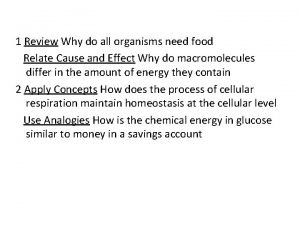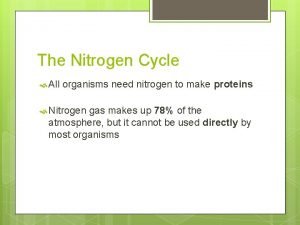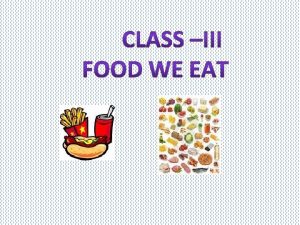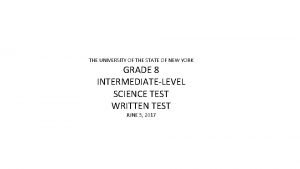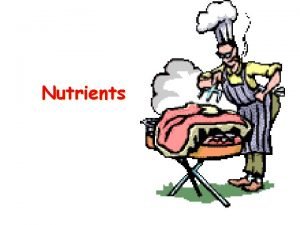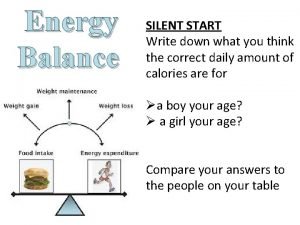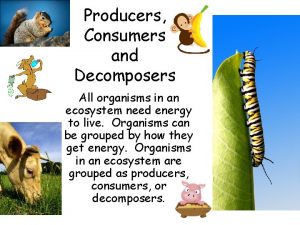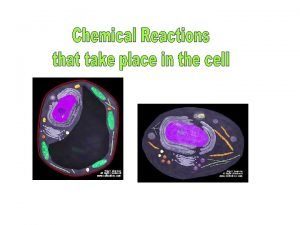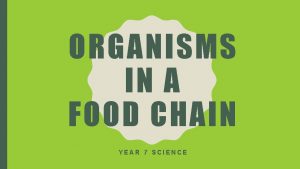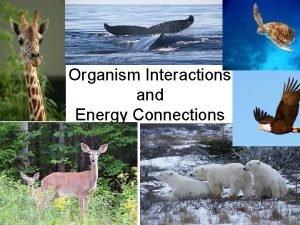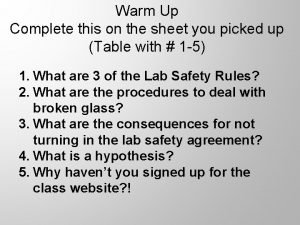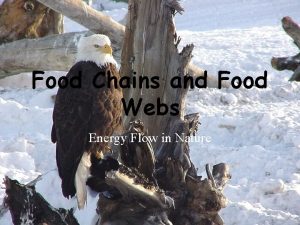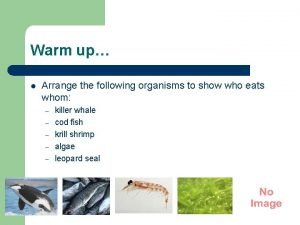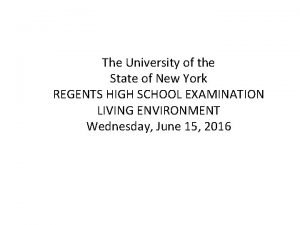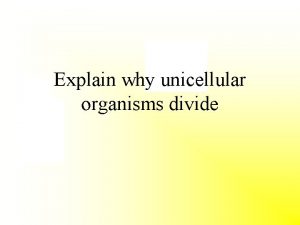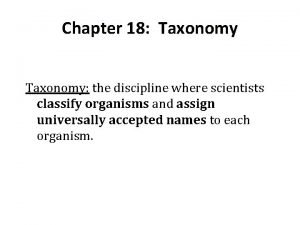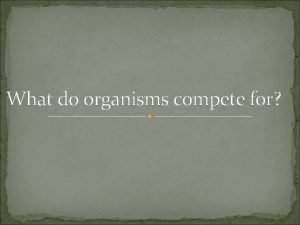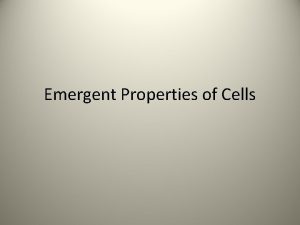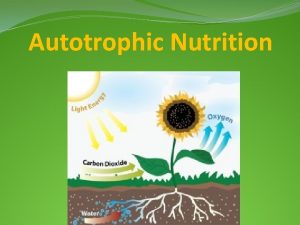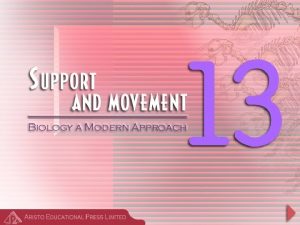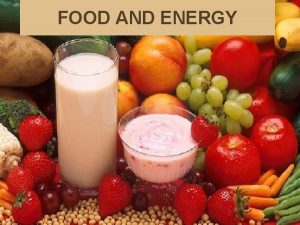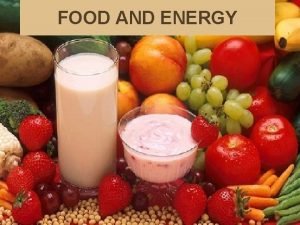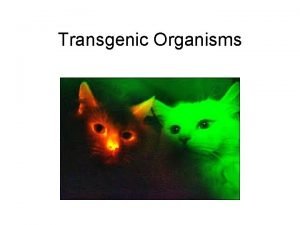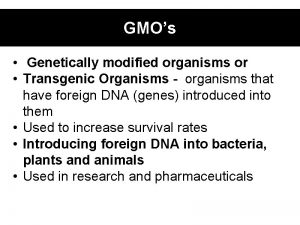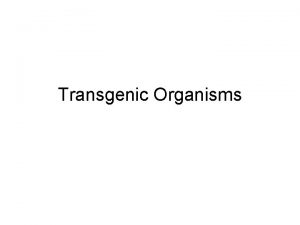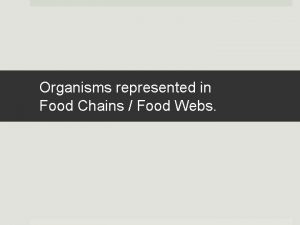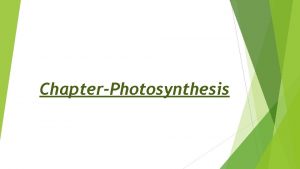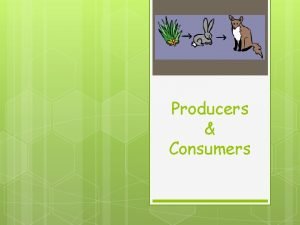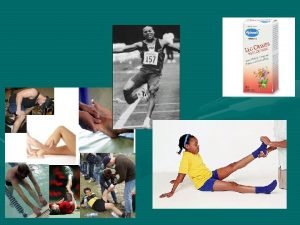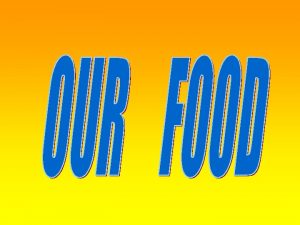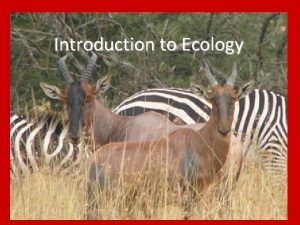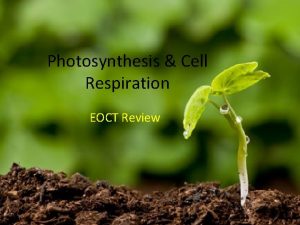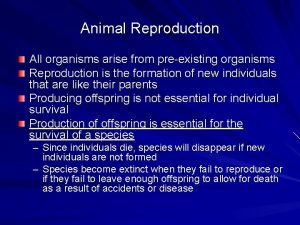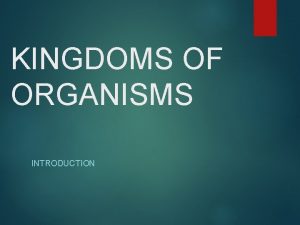1 Review Why do all organisms need food



























- Slides: 27

1 Review Why do all organisms need food Relate Cause and Effect Why do macromolecules differ in the amount of energy they contain 2 Apply Concepts How does the process of cellular respiration maintain homeostasis at the cellular level Use Analogies How is the chemical energy in glucose similar to money in a savings account

CH 9 CELLULAR RESPIRATION AND FERMENTATION

Chemical Energy and Food Why do you need food It provides the chemical building blocks they need to grow and reproduce It contains chemical energy that is released when its chemical bonds are broken.

Calorie Amount of energy needed to raise the temperature of 1 gram of water by 1 degree Celsius 1000 calories = 1 kilocalorie, or Calorie.

Cellular Respiration Series of chemical reactions that breaks down sugar and releases energy Occurs in all living cells Opposite of photosynthesis Oxygen + Glucose Carbon dioxide + Water + Energy 6 O 2 + C 6 H 12 O 6 6 CO 2 + 6 H 2 O + Energy.

Cellular Respiration This occurs in animals AND plants This is the process that whenever your body needs energy In addition to sugar, fats and proteins may also be used.

SIMILAR Burn fuel Produce heat Produce H 2 O Produce CO 2 Produce energy DIFFERENT Cellular Respiration release energy a little at a time Controlled

Stages of Cellular Respiration Glycolysis Krebs cycle Electron Transport Chain (ETC).

Glycolysis Produces only a small amount of energy Most energy (90%) remains in the chemical bonds.

Krebs Cycle Produces only a small amount of energy.

Electron Transport Chain (ETC) Produces the bulk of the energy Uses oxygen.

Aerobic Require oxygen Krebb Cycle and ETC Occurs in the mitochondria.

Anaerobic Does not need oxygen Glycolysis Occurs in cytoplasm.

Photosynthesis and Cellular Respiration Opposite processes Photosynthesis “deposits” energy Cellular respiration “withdraws” energy.

Glycolysis First stage of cellular respiration Glucose is broken down into 2 molecules of the 3 -carbon molecule pyruvic acid ATP and NADH are produced.

Krebs Cycle Pyruvic acid is broken down into carbon dioxide A. k. a. Citric Acid Cycle ATP is produced.

Electron Transport NADH and FADH 2 pass their electrons to ETC.

Electron Transport Electrons combine with H+ ions and oxygen to form water at end of ETC.

Electron Transport The high energy electrons move H+ ions against a concentration gradient across the inner mitochondrial.

Electron Transport H+ ions pass back through the ATP synthase causing it to spin ATP synthase attaches a phosphate to ADP to produce ATP with each rotation.

Energy Totals Complete breakdown of glucose through cellular respiration results in the production of 36 ATP molecules The rest of the energy is “lost” as heat (64%).

Fermentation Process of releasing energy from food in the absence of oxygen.

Fermentation NADH is converted back to NAD+ Allows glycolysis to continue producing ATP.

Alcoholic Fermentation Pyruvic acid + NADH Alcohol + CO 2 + NAD+ Yeast and other microorganisms Produces alcoholic beverages and causes bread dough to rise.

Lactic Acid Fermentation Pyruvic acid + NADH Lactic acid + NAD+ Humans and most organisms.

Quick Energy Cells have enough ATP for a few seconds of intense activity Lactic acid fermentation can supply enough ATP to last about 90 seconds Extra oxygen is required to get rid of the lactic acid produced.

Long-Term Energy Cellular respiration is required to continue production of ATP for exercise longer than 90 seconds Body uses glycogen stores for the first 15 -20 minutes Body then will break down other stored molecules, including fats.
 Why do organisms need food?
Why do organisms need food? Why do organisms need nitrogen?
Why do organisms need nitrogen? Competitive interaction
Competitive interaction Pictures
Pictures V
V Which principle
Which principle Why do we need food
Why do we need food Why do we need food
Why do we need food Unicellular multicellular
Unicellular multicellular Name all the rays
Name all the rays Producers in a food web
Producers in a food web Unit 2 food food food
Unit 2 food food food Food chain food chain food chain
Food chain food chain food chain Don't ask why why why
Don't ask why why why Decomposers and producers
Decomposers and producers Where do all organisms get their energy
Where do all organisms get their energy Mitochondria information
Mitochondria information Food chain with 7 organisms
Food chain with 7 organisms Who eats primary consumers
Who eats primary consumers Organisms that make their own food
Organisms that make their own food Consist of many overlapping food chains
Consist of many overlapping food chains Arrange the following in a food chain
Arrange the following in a food chain Farmers may someday clone their best milk producing
Farmers may someday clone their best milk producing Why do unicellular organisms divide
Why do unicellular organisms divide Why do scientists classify organisms?
Why do scientists classify organisms? Why do organisms compete
Why do organisms compete Why do multicellular organisms have emergent properties?
Why do multicellular organisms have emergent properties? Why do scientists classify organisms
Why do scientists classify organisms
